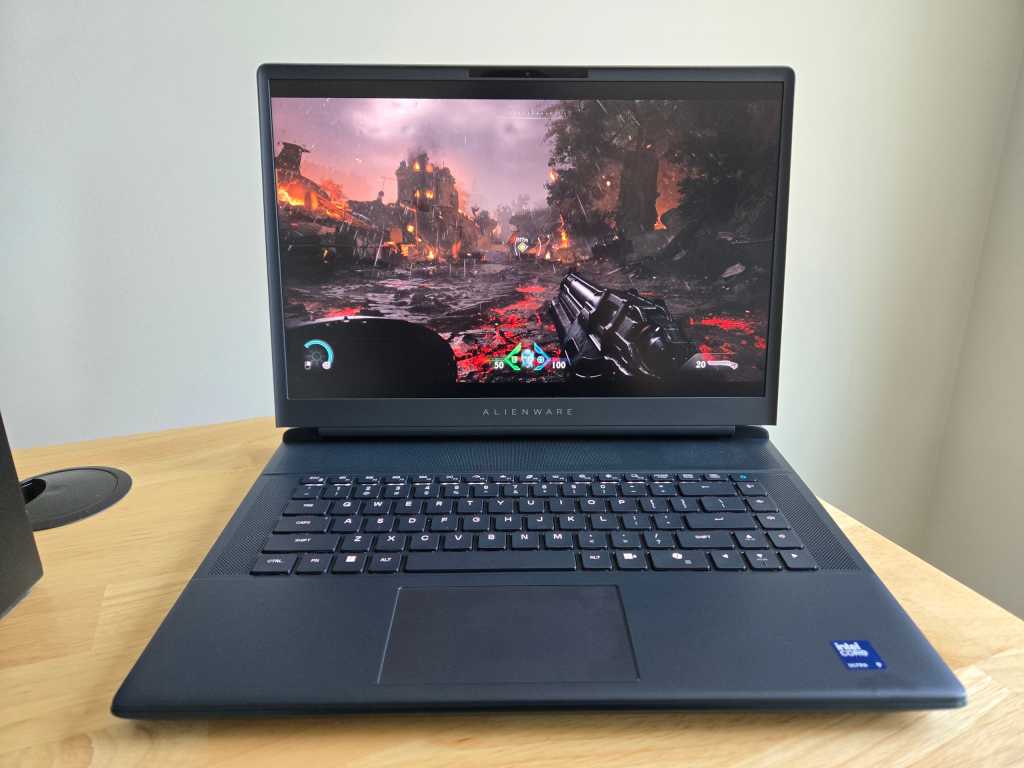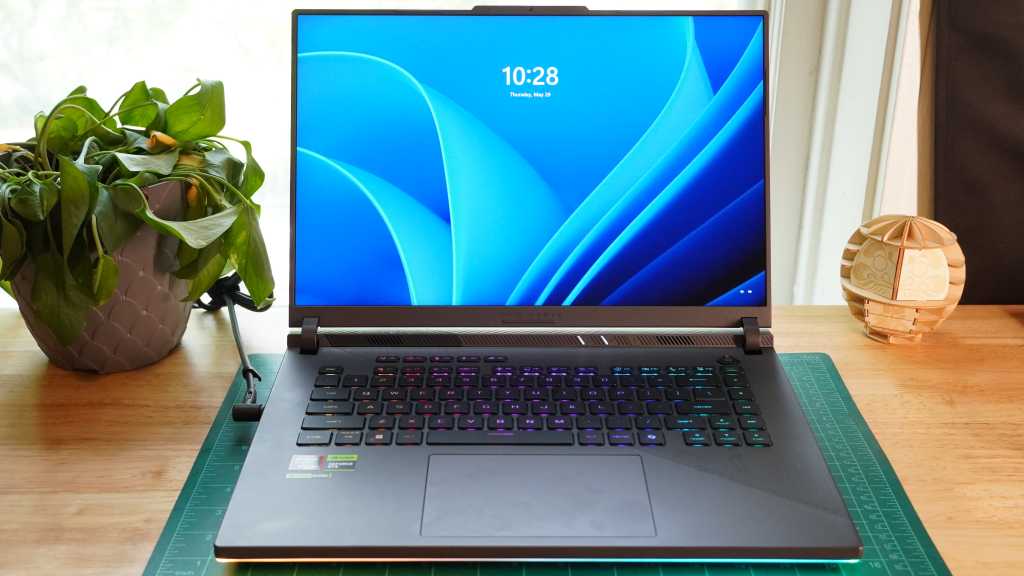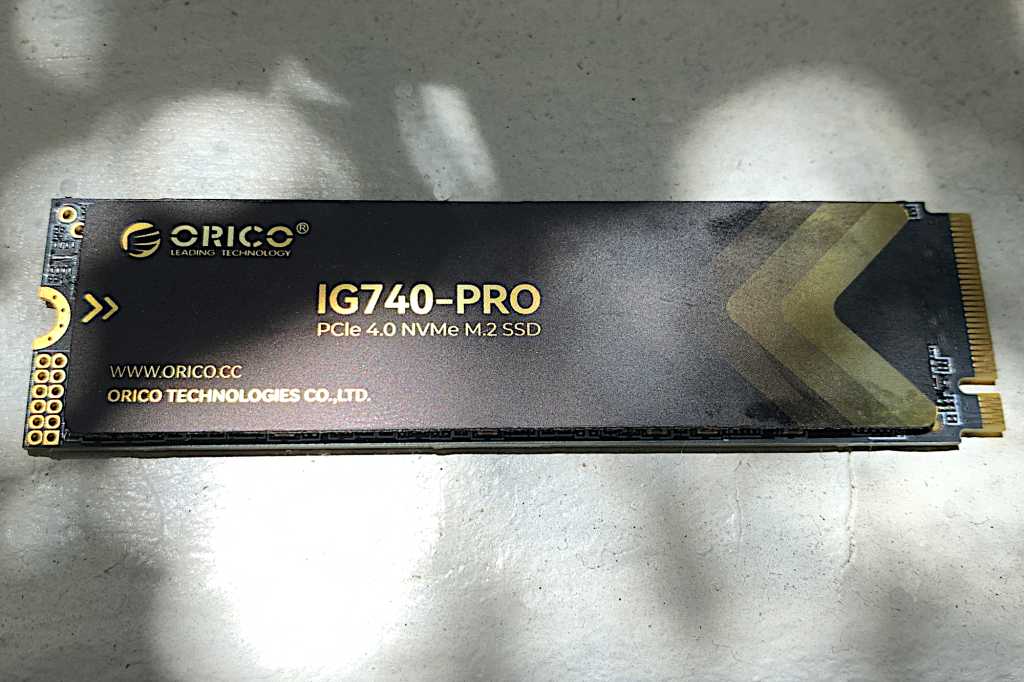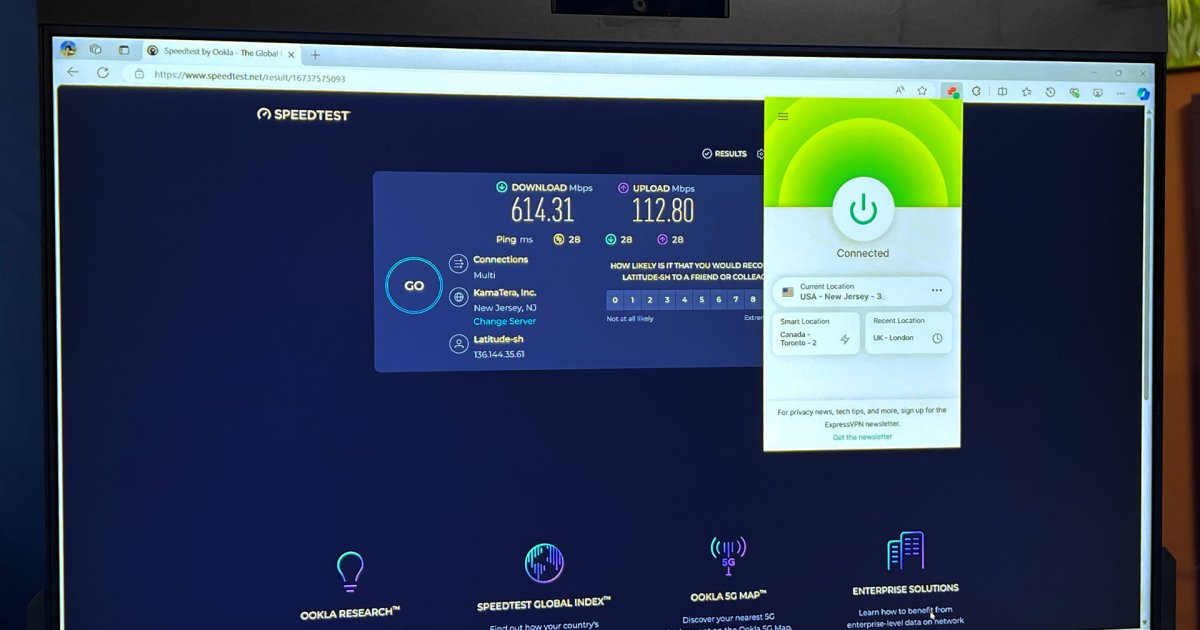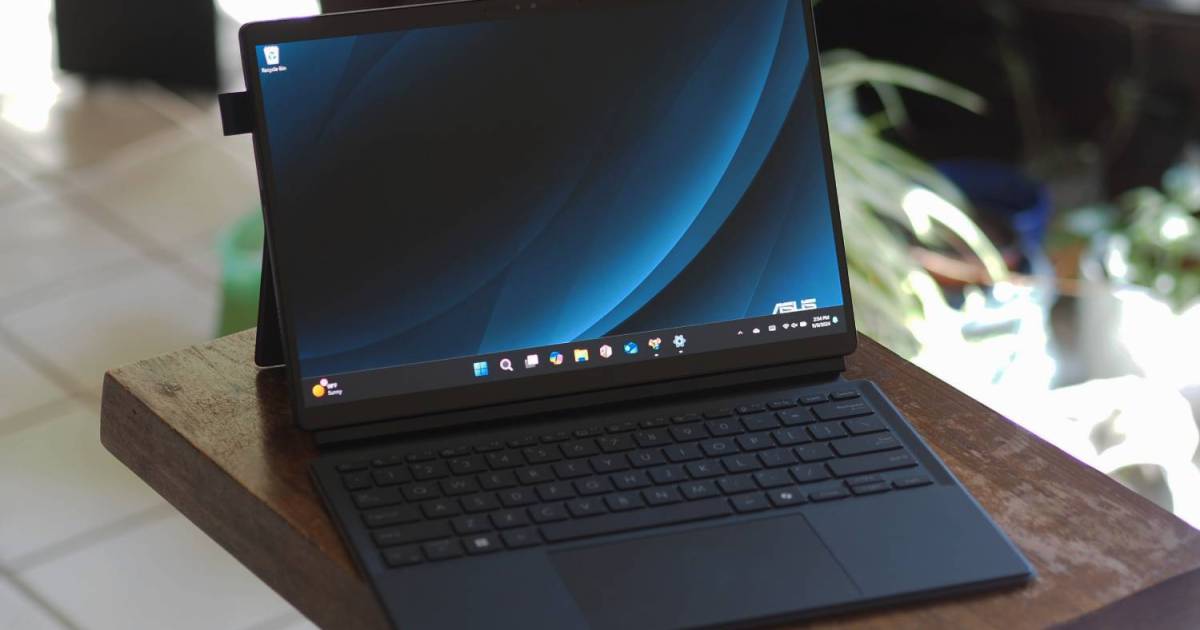The term “Blade” for 2280 M.2 NVMe SSDs might be a touch of marketing flair from Adata’s XPG, but the XPG Mars 980 Blade indeed delivers sharp performance. This PCIe 5.0 SSD aims to slice through loading times, especially excelling in tasks vital for a responsive operating system. Dive into our review to see how this drive performs and if it’s the right upgrade for your rig. You can also see how it stacks up in our roundup of the best SSDs.
XPG Mars 980 Blade: Key Specifications and Features
The XPG Mars 980 Blade is a cutting-edge PCIe 5.0 x4, NVMe 2.0 compliant SSD in the standard 2280 (22mm wide, 80mm long) M.2 form factor. At its heart lies a Silicon Motion SMI SM2508 controller paired with 232-layer 3D TLC NAND flash memory. A key feature is its DRAM cache, which significantly boosts random read/write performance – crucial for operating system responsiveness and small file handling. While Adata hasn’t specified the exact DRAM amount, observations of the 2TB model suggest a 1GB DRAM per 1TB NAND capacity configuration, which is a common and effective ratio.
 XPG Mars 980 Blade SSD PCB showcasing its Adata design and memory chips
XPG Mars 980 Blade SSD PCB showcasing its Adata design and memory chips
Adata backs the Mars 980 Blade with a 5-year warranty and an impressive 740TBW (terabytes written) endurance rating per terabyte of capacity. This is a notable step up from the more common 600TBW rating found on many high-end TLC drives, offering users greater peace of mind regarding longevity. An optional high-quality heat spreader is also included, which can be beneficial for maintaining optimal performance under sustained loads.
Pricing and Availability
At the time of this review, the XPG Mars 980 Blade 2TB model, which we tested, is priced at $205. For those with different capacity needs or budgets, a 1TB version is available for $135. Adata has also announced an upcoming 4TB capacity variant, which will be priced at $385. These price points position the Mars 980 Blade competitively, making it an attractive option for a high-performance PCIe 5.0 NVMe SSD equipped with DRAM.
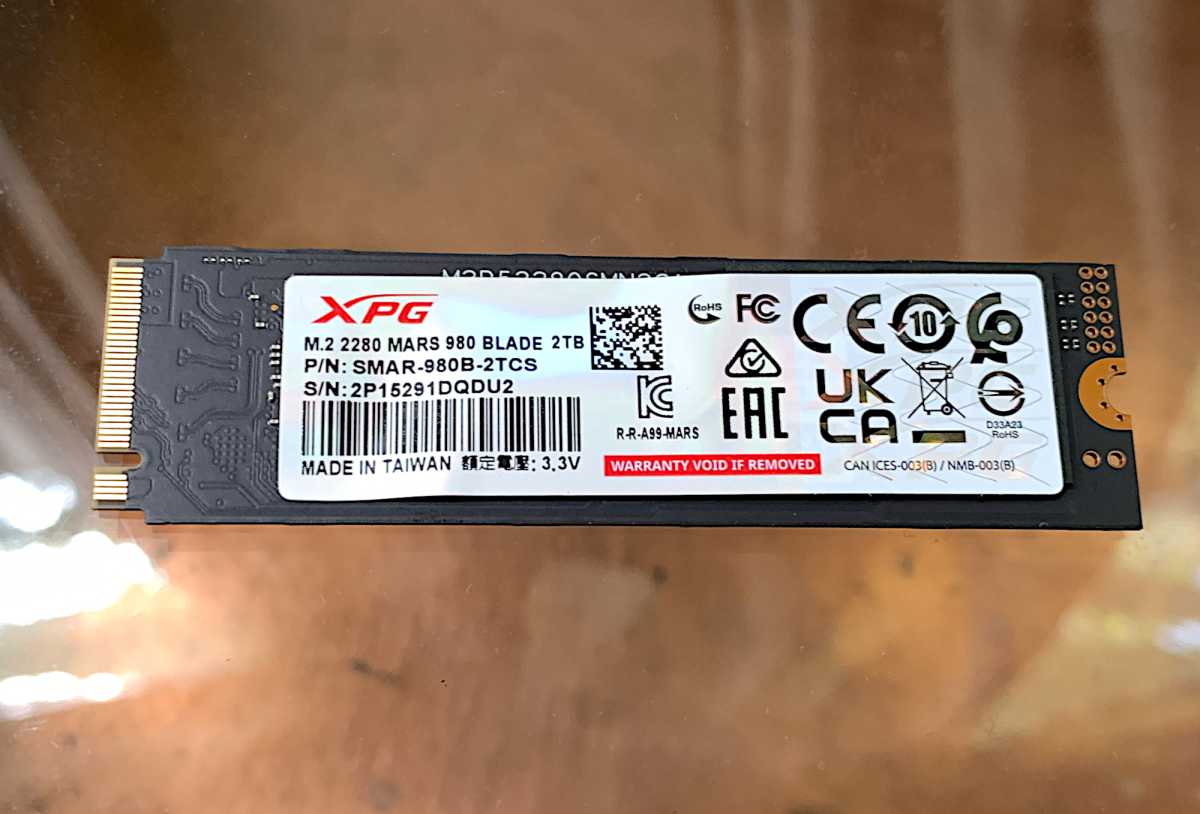 XPG Mars 980 Blade M.2 NVMe SSD without its optional heatsink attached
XPG Mars 980 Blade M.2 NVMe SSD without its optional heatsink attached
Performance Analysis: How Fast is the Mars 980 Blade?
The XPG Mars 980 Blade truly shines in random file operations. Synthetic benchmarks like CrystalDiskMark 8 and AS SSD confirm its class-leading random write performance and top-tier 4K read speeds. However, its sequential read performance with a single queue and thread (Q1T1) was observed to be somewhat slower than direct competitors. Beyond this specific scenario, its sequential transfer capabilities align well with other high-end PCIe 5.0 SSDs such as the Sandisk WD Black 8100, Crucial T705, and Samsung 9100 Pro.
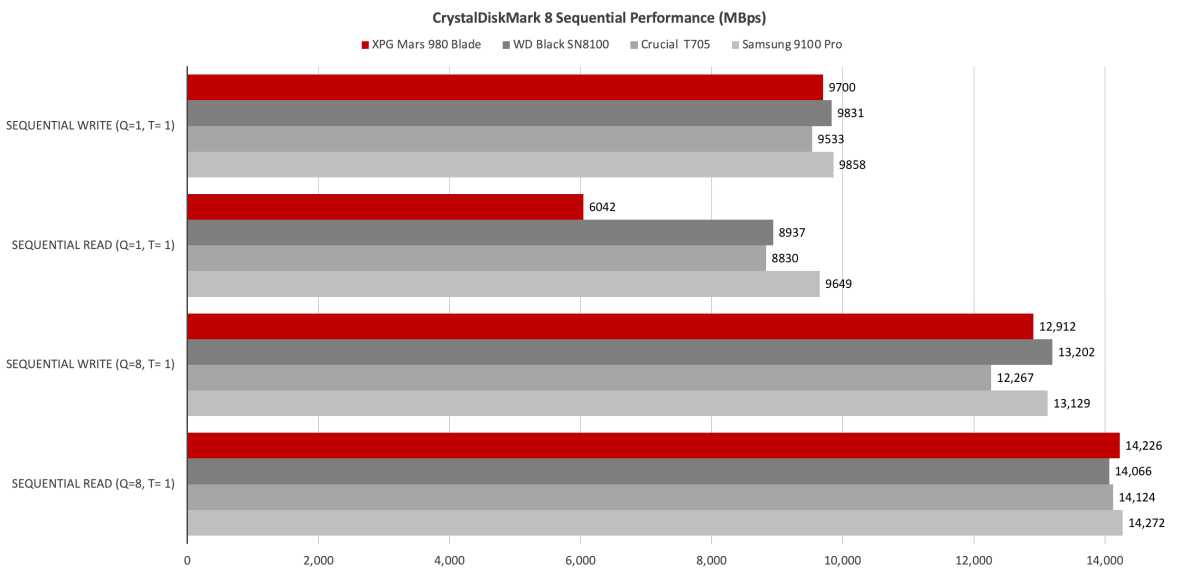 Benchmark graph comparing XPG Mars 980 Blade sequential read Q1T1 performance against competing SSDs
Benchmark graph comparing XPG Mars 980 Blade sequential read Q1T1 performance against competing SSDs
Exceptional 4K Random Performance
The standout characteristic of the Mars 980 Blade is its phenomenal 4K random read and write speeds. As illustrated in benchmark comparisons, it consistently outperformed several other very fast drives in this metric. This exceptional 4K performance is precisely why the Mars 980 Blade is an excellent candidate for an operating system drive, as OS tasks involve numerous small read and write operations.
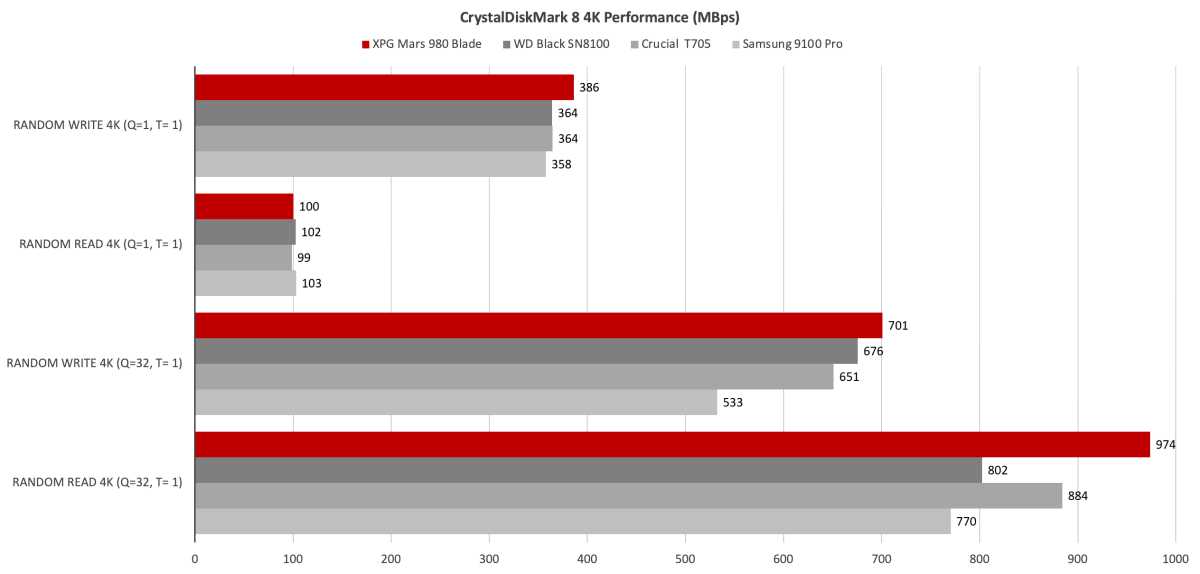 4K random read and write benchmark results for the XPG Mars 980 Blade SSD compared to other drives
4K random read and write benchmark results for the XPG Mars 980 Blade SSD compared to other drives
Real-World File Transfers
In real-world Windows file transfer tests, the Mars 980 Blade performed competently, though it slightly trailed the top performers. For instance, in 48GB file transfers, it was about 10 seconds behind the Crucial T705, placing it fourth among the tested cohort of four drives. While not leading, this is still a very respectable result.
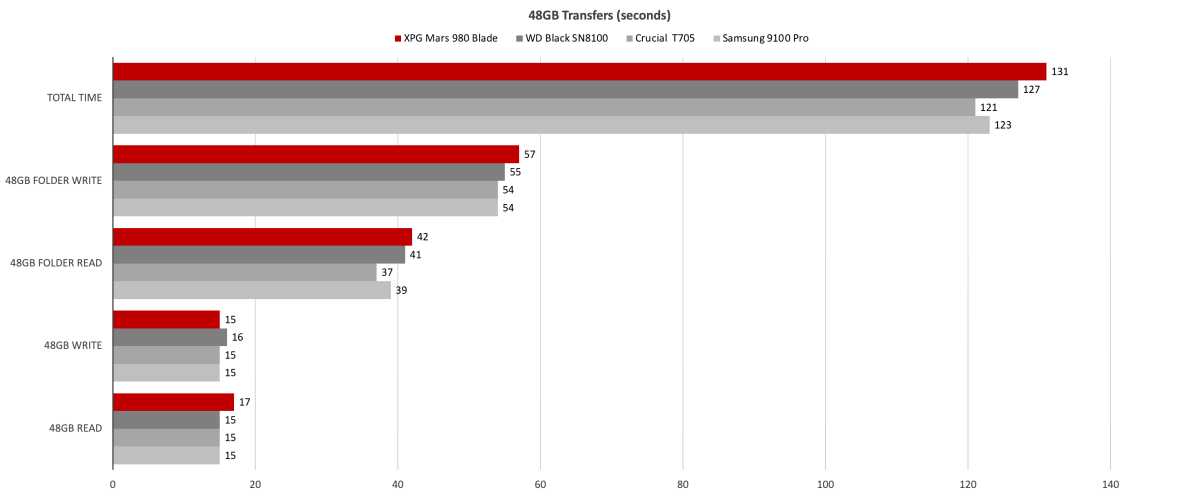 Benchmark graph comparing XPG Mars 980 Blade 48GB file transfer speed against competitor SSDs
Benchmark graph comparing XPG Mars 980 Blade 48GB file transfer speed against competitor SSDs
When it came to larger 450GB sustained write tests, the differences between the top PCIe 5.0 drives narrowed. The Mars 980 Blade secured a third-place finish in this test, again approximately 10 seconds slower than the leading Crucial T705. This indicates robust performance even under heavy, prolonged workloads.
 Benchmark graph illustrating XPG Mars 980 Blade 450GB sustained write performance versus other SSDs
Benchmark graph illustrating XPG Mars 980 Blade 450GB sustained write performance versus other SSDs
Overall, the XPG Mars 980 Blade’s random 4K prowess makes it a prime choice for an OS drive. In other performance aspects, it generally keeps pace with its PCIe 5.0 DRAM-equipped competitors.
Should You Buy the XPG Mars 980 Blade?
Absolutely. If you’re in the market for a primary drive to run your operating system, the XPG Mars 980 Blade’s exceptional random access speeds make it a compelling choice. Its competitive pricing for a PCIe 5.0 SSD with DRAM further sweetens the deal. While competitors also offer strong performance, the Mars 980 Blade stands out for OS duties. However, always compare current market prices. If you don’t absolutely need the bleeding-edge speed of PCIe 5.0, more budget-friendly HMB (Host Memory Buffer) PCIe 4.0 options might suffice.





